Most of us don’t have a perfectly even skin tone, but if you suffer from hyperpigmentation, you may feel like the differences in your skin are more noticeable. Hyperpigmentation has many different causes and avoiding them isn’t always possible.
Let’s talk about what hyperpigmentation is, including the different types of hyperpigmentation. We’ll cover what it looks like, what causes it, and what treatment options are available to deal with these areas of unevenness.
We’ll also talk about the outlook for hyperpigmentation and whether or not it will go away on its own or worsen over time.
What Is Hyperpigmentation?
Hyperpigmentation is a skin condition that causes patches of skin to appear darker than others. These patches can happen in clusters or as single spots on the skin. Hyperpigmentation can appear on your face and other parts of your body, like your chest, back, arms, and legs.
Hyperpigmentation is typically harmless and doesn’t always mean that your skin is damaged, but in rare cases, it can be a symptom of an underlying health concern.
It’s important to differentiate between hyperpigmentation and a precancerous spot on your skin. The only way to determine whether you have discoloration, or a precancerous spot is to have it checked by a healthcare provider like a dermatologist.
What Does Hyperpigmentation Look Like?
You might use different terms to describe hyperpigmentation. Areas of darker skin are often referred to as sunspots, age spots, liver spots, or dark spots of skin pigmentation. There are several forms of hyperpigmentation.
Melasma
If you’ve been pregnant or know someone who has been pregnant, you might have heard them refer to the mask of pregnancy or melasma. These areas of darker skin are thought to be caused by hormonal changes the body undergoes during pregnancy.
Another cause of melasma is thought to be ultraviolet radiation. If you already have melasma from hormonal changes, sun exposure could worsen it.
Solar Lentigines
The sun is a source of skin damage and can darken skin, forming a suntan. Melanin, the compound in our skin that gives us our skin color, also helps protect our skin from sun damage.
The sun accelerates the production of melanin in our skin, which can result in sunburn or a suntan. Over time, sun exposure can cause melanin to clump together in areas. These areas of highly concentrated melanin form sunspots.
Post-Inflammatory Hyperpigmentation
Another cause of hyperpigmentation is skin damage and injury. Acne, an inflammation of the skin and pores, can lead to post-inflammatory hyperpigmentation in the form of acne scars.
You may also develop post-inflammatory hyperpigmentation from skin treatments that aren’t performed correctly or from surgery to remove spots.
What Does Hyperpigmentation Look Like?
It can be difficult to decide whether or not the dark areas on your skin are areas of hyperpigmentation or something else. Although skin injuries can result in post-inflammatory hyperpigmentation, the spots often go away and short periods of time with little or no other treatment. If you suspect you have hyperpigmentation of any kind, you can look for signs.
Symptoms of hyperpigmentation can include:
- These patches or spots on your skin are rarely raised and don’t itch, peel, or flake. If you experience any of these side effects, you should see your dermatologist.
- Small spots that are darker than your natural skin tone
- Patches that are irregular in size and shape and are darker than natural skin tone
- Areas of skin that get darker over time.
What Are Some Causes of Hyperpigmentation?
Everyone is capable of developing hyperpigmentation. However, certain lifestyle habits or changes can cause your risk of developing these dark spots to become higher.
Medications
Certain medications can cause your skin to become more sensitive to changes in melanin. These medications carry a side effect that causes the skin to be more sensitive to the sun. Excessive sun exposure while taking these medications may lead to increased hyperpigmentation or darkening of discolorations that already exist on the skin.
The most common medications responsible for these side effects include oral contraceptives, over the counter, non-steroidal anti-inflammatory drugs, and some antibiotics.
Sun Exposure
Exposure to the sun can increase your risk of developing hyperpigmentation, but it can also worsen existing hyperpigmentation. No matter your skin type, your skin needs sun protection when exposed to UV rays. Both UVA and UVB rays can damage your skin, but it is thought that UVB rays are responsible for deeper, darker hyperpigmentation.
Using sunscreen with an SPF 30 or higher will be most beneficial in keeping your skin protected from the sun. Zinc oxide is a natural skin protector that is available in protective SPFs.
Underlying Medical Conditions
Certain diseases may make you more susceptible to developing hyperpigmentation. Addison’s disease, a disease that affects the adrenal glands, can cause the skin to darken and form hyperpigmentation patches.
If you begin to develop areas of hyperpigmentation without sun exposure or a change in your daily medications, it’s a good idea to contact your doctor.
Will Hyperpigmentation Go Away?
Most of the time, areas of hyperpigmentation are small and insignificant. They can often be covered up with makeup if they make you uncomfortable. However, for larger areas, you may wonder if they’ll go away on their own or if treatment options are available to help them fade.
In some cases, hyperpigmentation spots will naturally fade or go away on their own. In these cases, time, along with proper protection from the sun, will help the skin repair. In other cases, hyperpigmentation may become worse. If you already have areas of hyperpigmentation and actively expose them to the sun, or if you begin taking a phototoxic medication, the spots can worsen.
If you have dark spots that just won’t budge, you should be aware of treatment options available for removing them or feeding them so they are less noticeable.
What Can I Do About Hyperpigmentation?
It’s natural to want an even skin tone. Thankfully, numerous options are available to help you naturally fade dark spots and permanently eradicate them.
Laser Treatments
Two specific types of laser treatment can help eliminate spots of hyperpigmentation. They are ablative lasers and non-ablative lasers.
Ablative laser treatments are designed to safely remove the uppermost layers of your skin to reveal skin that is not damaged by melanocytes. Non-ablative laser treatment focuses on resurfacing the uppermost layer of skin, which requires less downtime but may not completely erase the hyperpigmentation.
Chemical Peels
Peels are a type of skincare treatment available in your dermatologist’s office and over the counter. Peels use specific types of acid (like glycolic acid and kojic acid) to remove the top layer of skin.
Because some chemical peels are more highly concentrated, they are best performed in a dermatologist’s office. Applying them incorrectly could result in skin damage, worsening hyperpigmentation, and even post-inflammatory hyperpigmentation.
Anytime you get a peel, it’s important to remember never to pick or peel the dead skin that results from the process. The skin that is removed from a peel will naturally slough away in a few days. Removing it too soon can cause damage to your skin, including irritation, redness, itching, and scarring.
Microdermabrasion
Exfoliation is a method that helps remove the top layer of dead skin cells on the surface of the skin. Topical forms of exfoliation can include scrubs or acids, like alpha hydroxy acids.
For more intense hyperpigmentation, microdermabrasion may be used. You can use microdermabrasion tools at home, but professional microdermabrasion tools are generally more effective for darker, deeper spots.
Professional microdermabrasion therapies usually result in red skin that requires a few days of downtime before you can return to normal activities.
Over-the-Counter Lightening Creams
If you’d prefer a less invasive method of dealing with dark spots, over-the-counter creams that include lightening ingredients can help gradually fade spots and make hyperpigmentation less noticeable.
While vitamin C may be the most popular skin brightening ingredient, numerous other ingredients can help reduce dark spots and help correct an uneven skin tone.
Retinoids
Normally given to people to help fight early signs of aging, like fine lines and wrinkles, retinoids can also help fade dark spots. Retinoids work by stimulating cell turnover.
Skin is constantly renewing, creating new skin cells below the surface of the skin and pushing older cells to the surface. As we get older, the time it takes for skin cells to renew takes longer. When you have hyperpigmentation, the spot may stay on the skin's surface longer.
Retinoids can stimulate cell turnover, causing your skin to renew more quickly than it would on its own. Retinoids do carry side effects, however. Continued use can result in irritation like redness, peeling, and burning of the skin.
Intense Pulse Light Therapy
Intense pulse light therapy, or IPL, is a type of laser treatment that uses focused light to stimulate collagen growth in the skin. Collagen is the main protein that is foundational in your skin. Stimulating collagen production can help the skin renew faster and help break up concentrations of melanin to help fade dark spots.
Living With Hyperpigmentation
Unlike skin conditions like eczema or psoriasis, hyperpigmentation is a condition that can affect anyone and may or may not go away on its own with time. You’re more at risk of developing hyperpigmentation if you spend time in the sun without protection, take certain medications, or become pregnant.
Having a spot of hyperpigmentation can make some people feel uncomfortable. If your skin tone concerns you, it’s a good idea to talk to your dermatologist or skin care provider about your options. While you can’t always remove every instance of hyperpigmentation, some treatments can help them become less noticeable.
Healthy Skin
For more information on keeping your skin healthy and to learn about different skin issues, you can check out the Furtuna Skin blog. There, you’ll learn about natural ingredients that can help support your skin health and address certain skin conditions.
Sources:
Melasma: Treatment, Causes & Prevention | My Cleveland Clinic.org
Drug-induced skin pigmentation. Epidemiology, diagnosis and treatment | PubMed
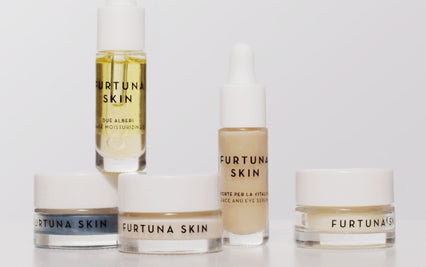
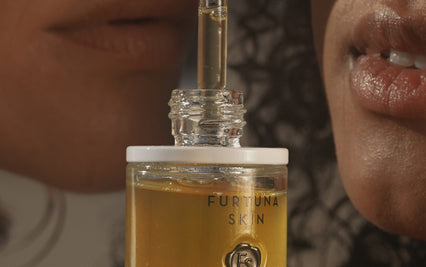
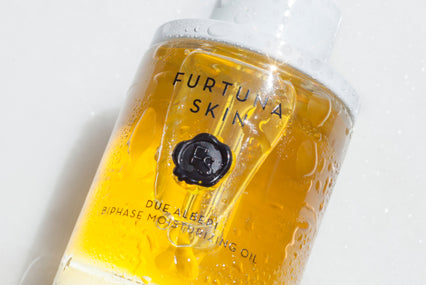
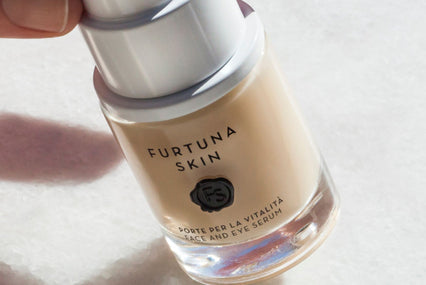
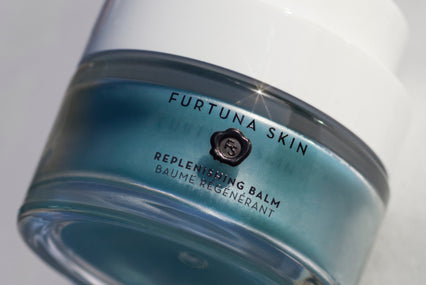
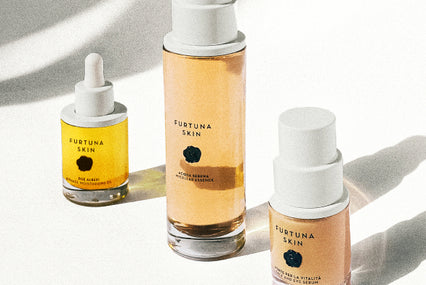






Comment